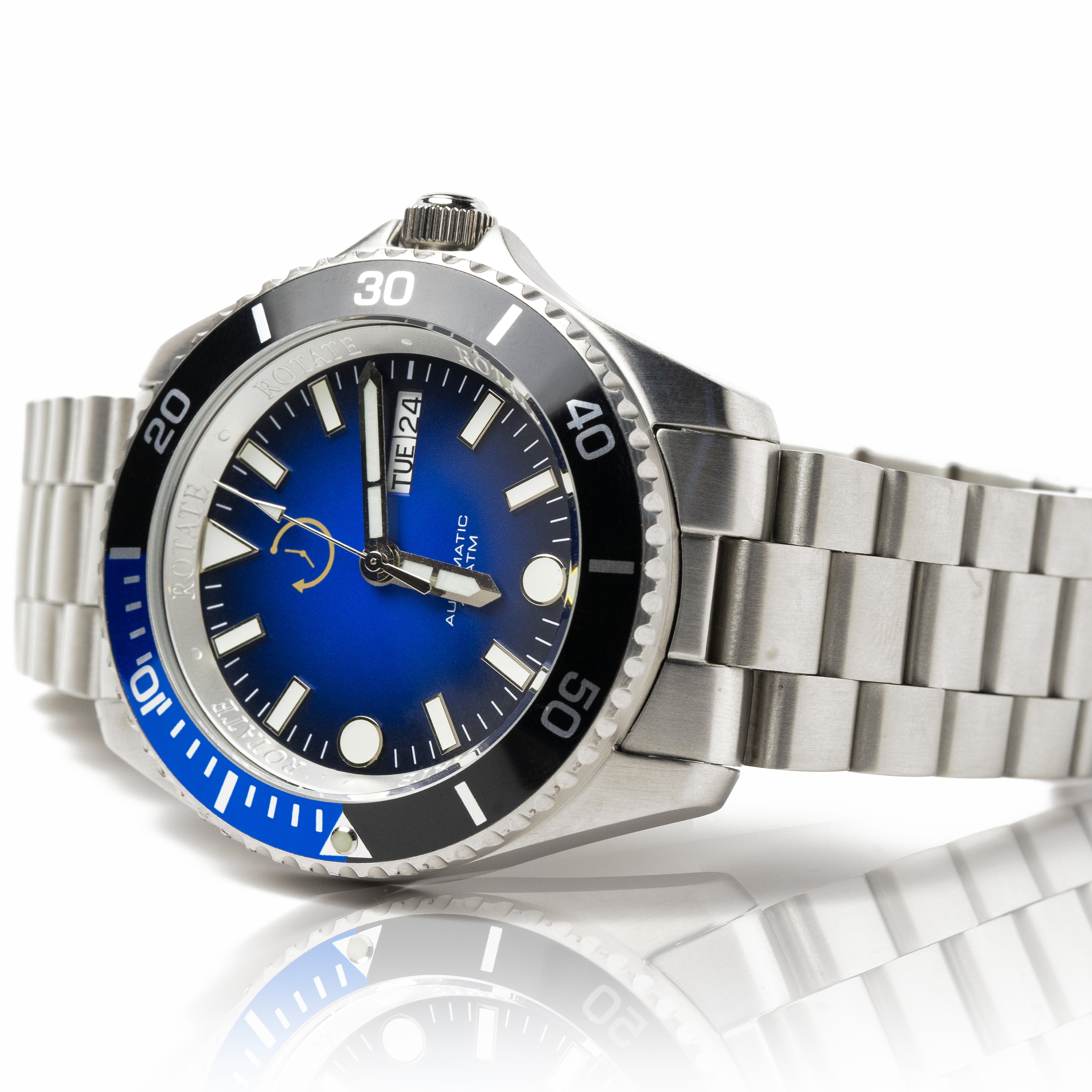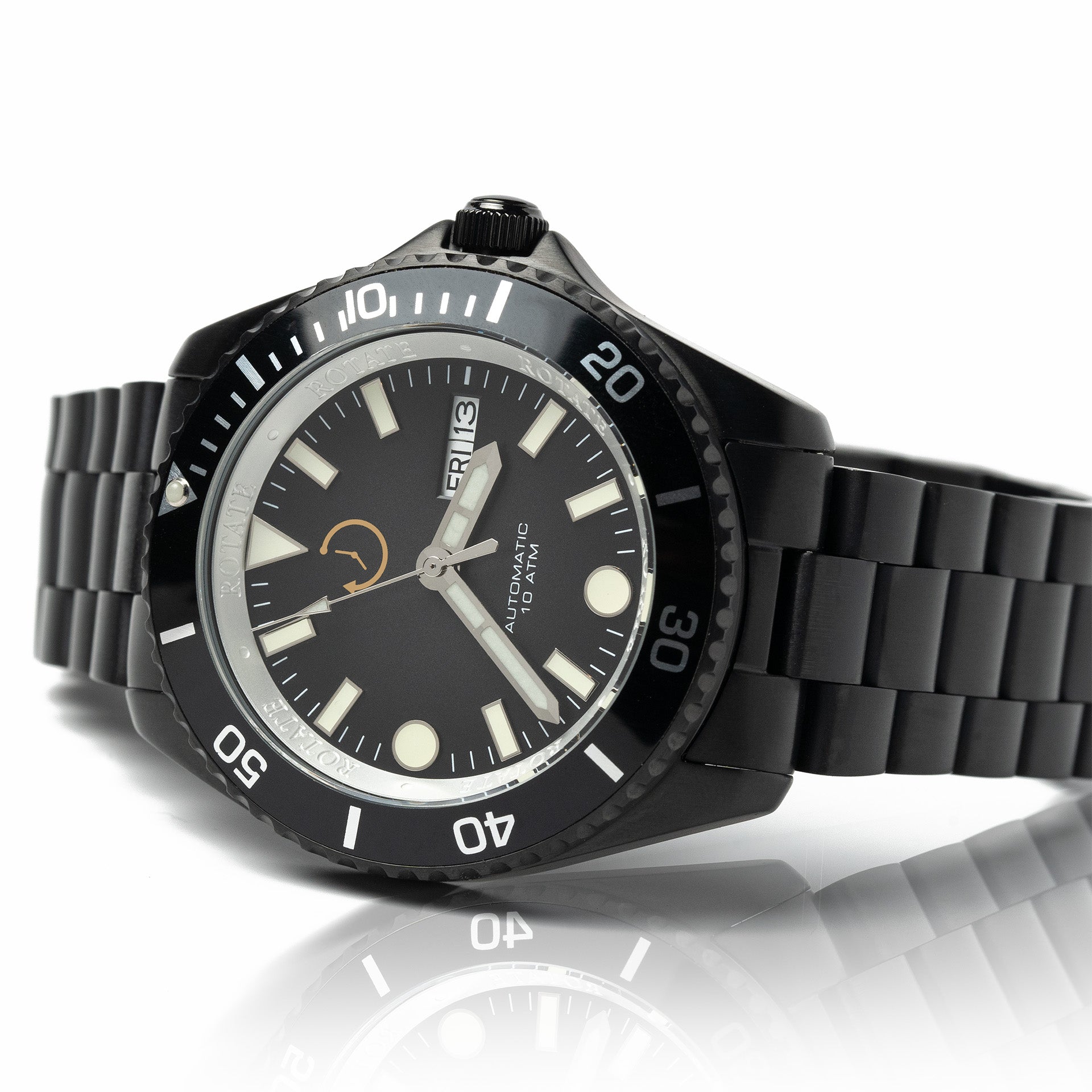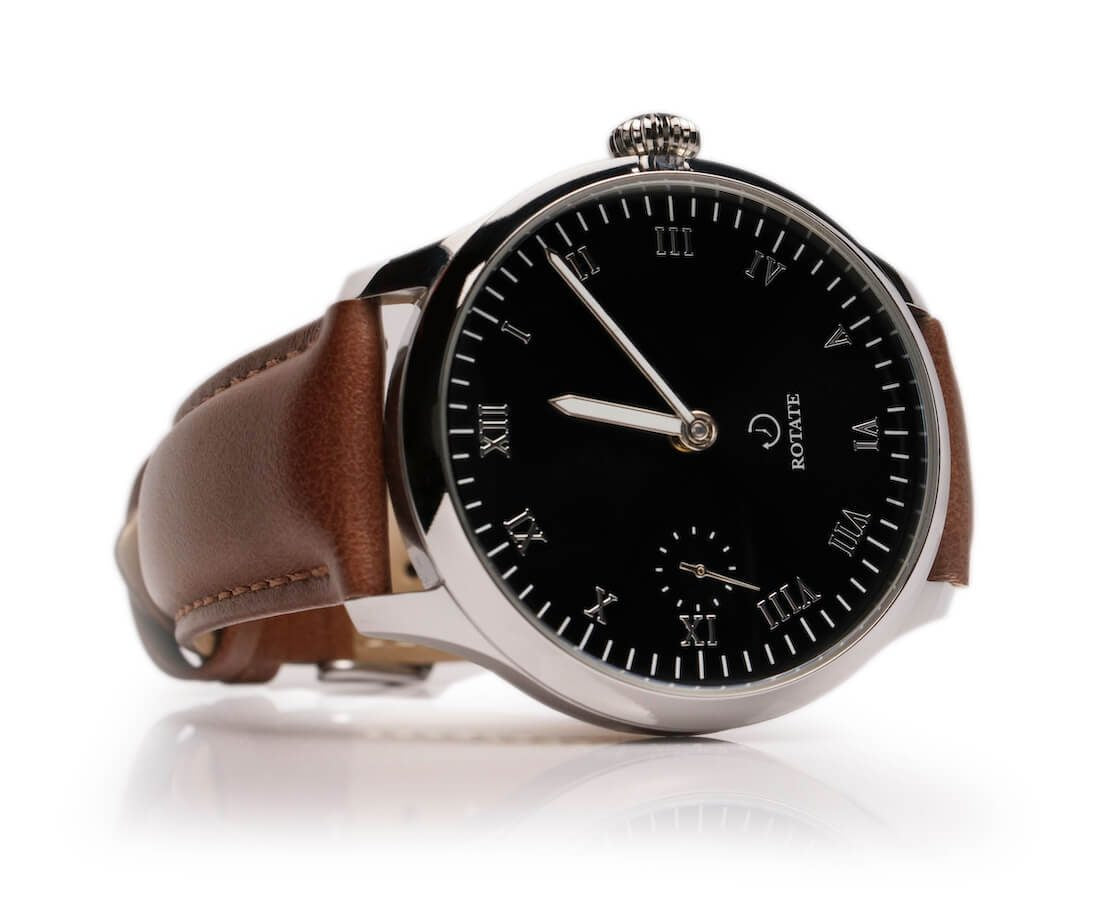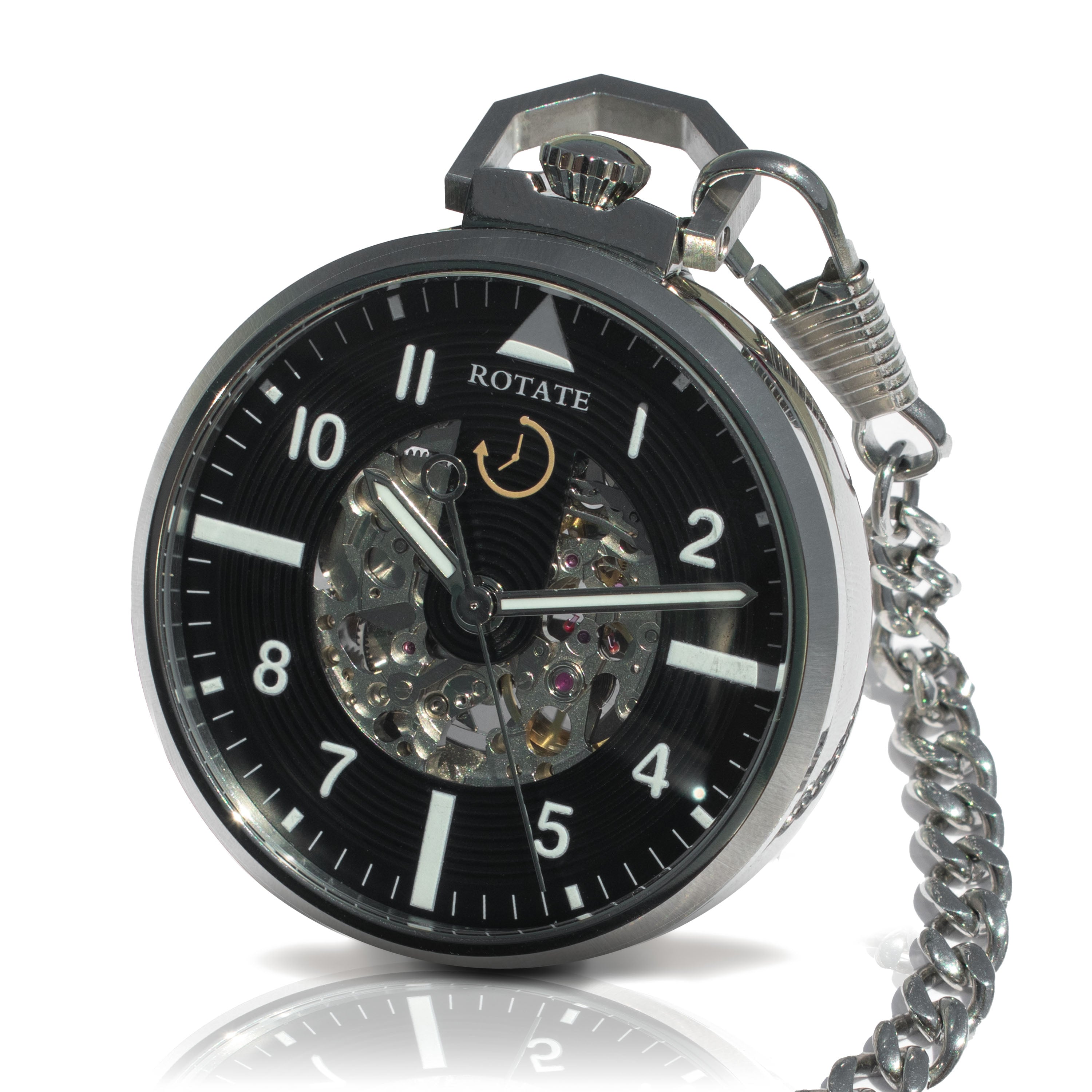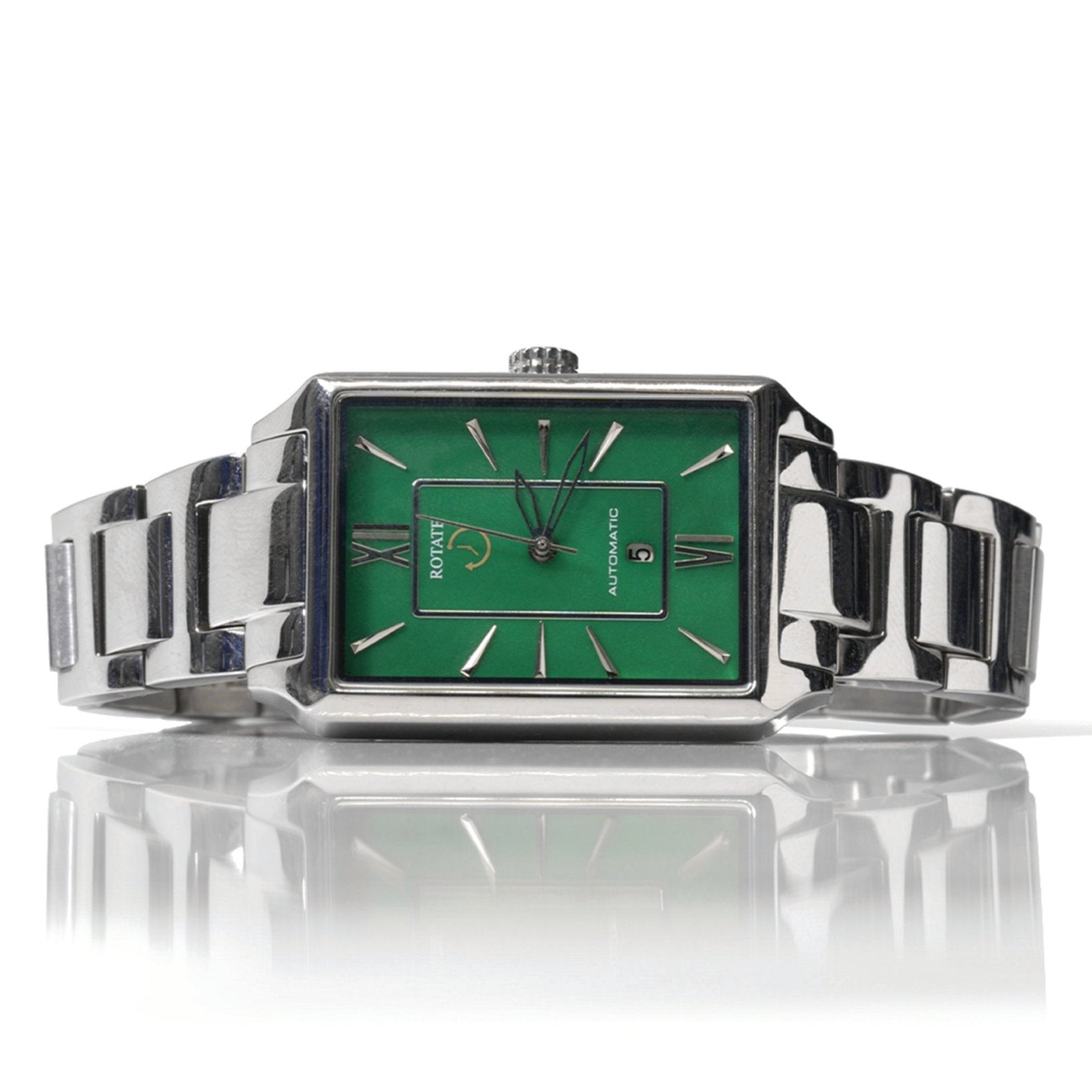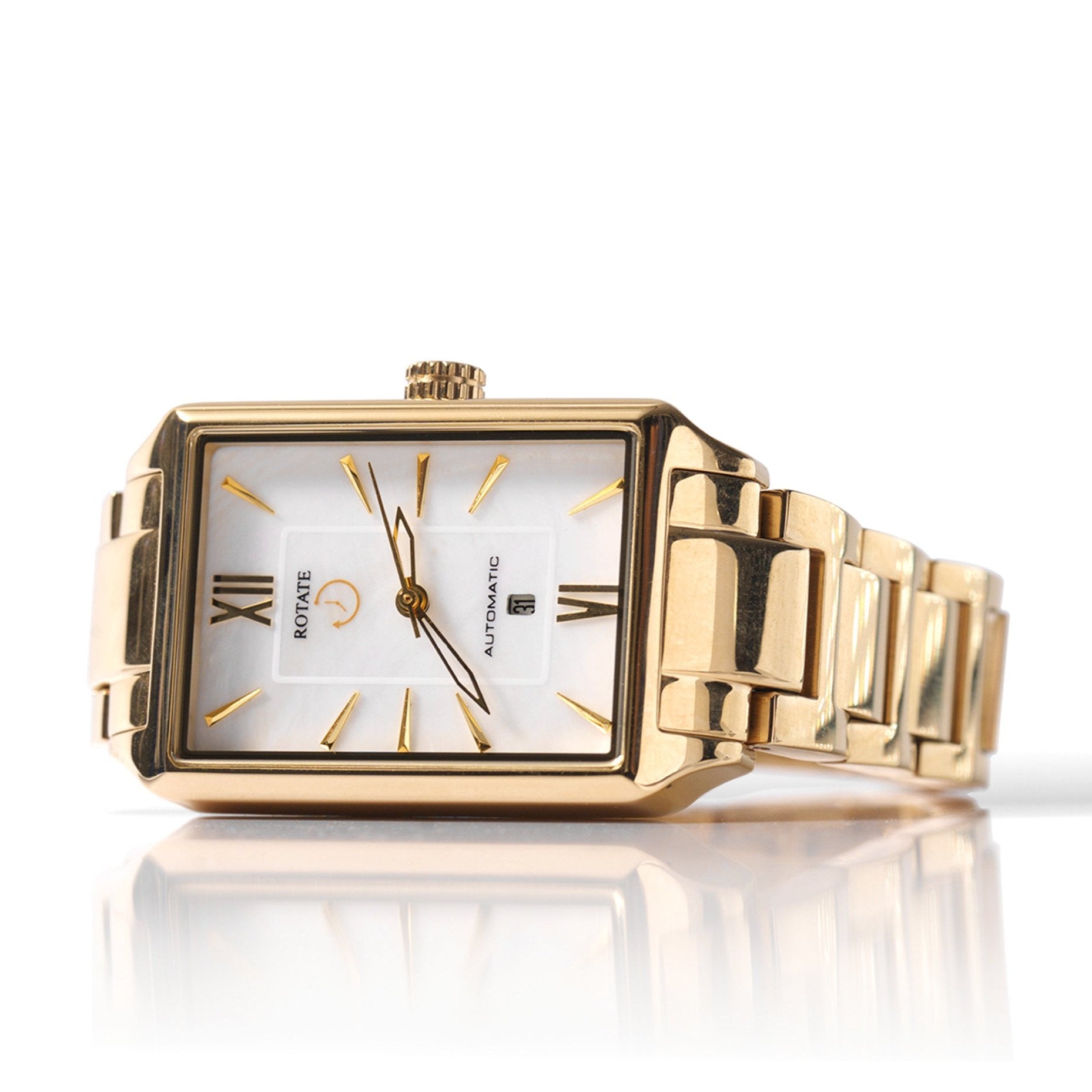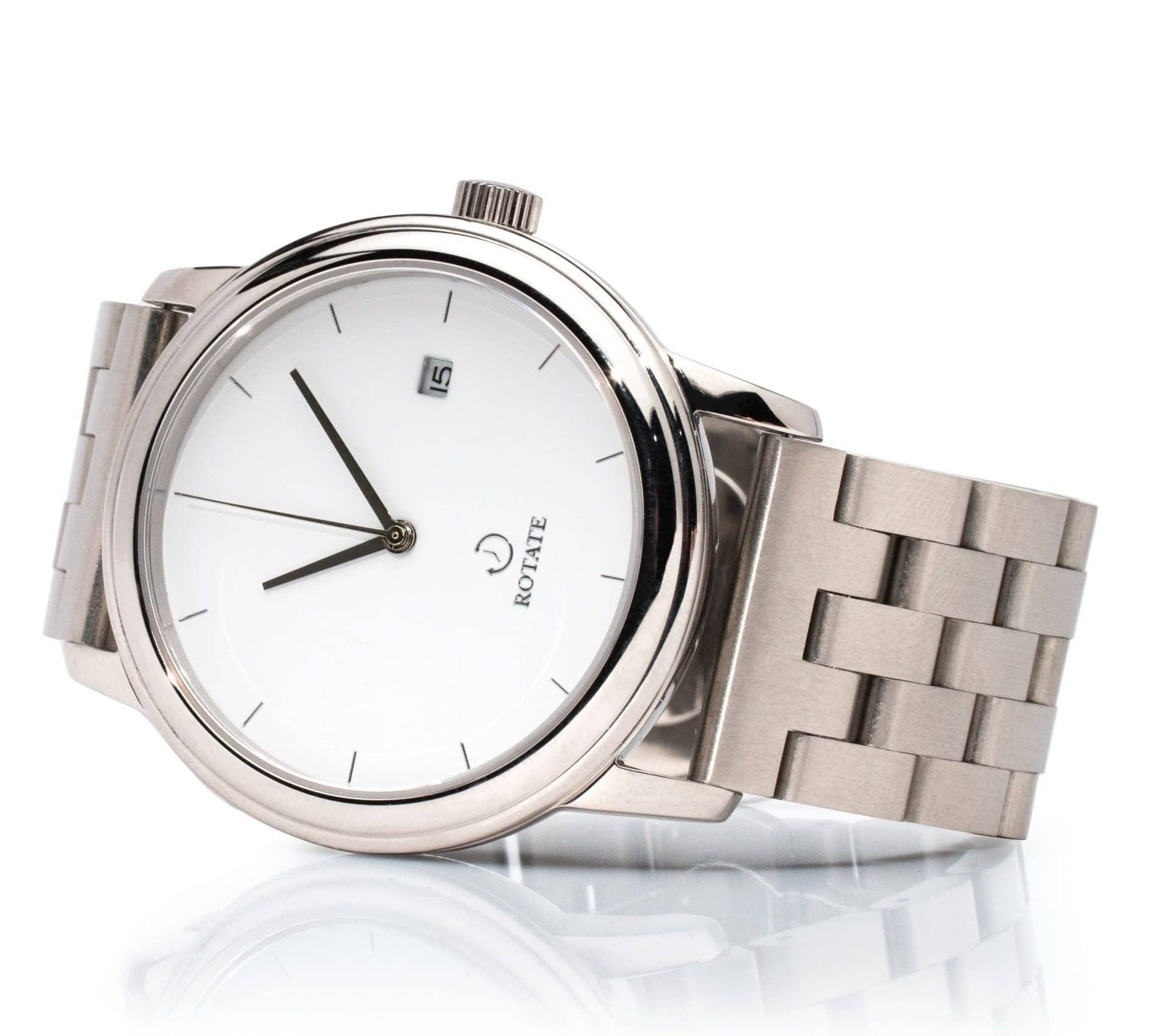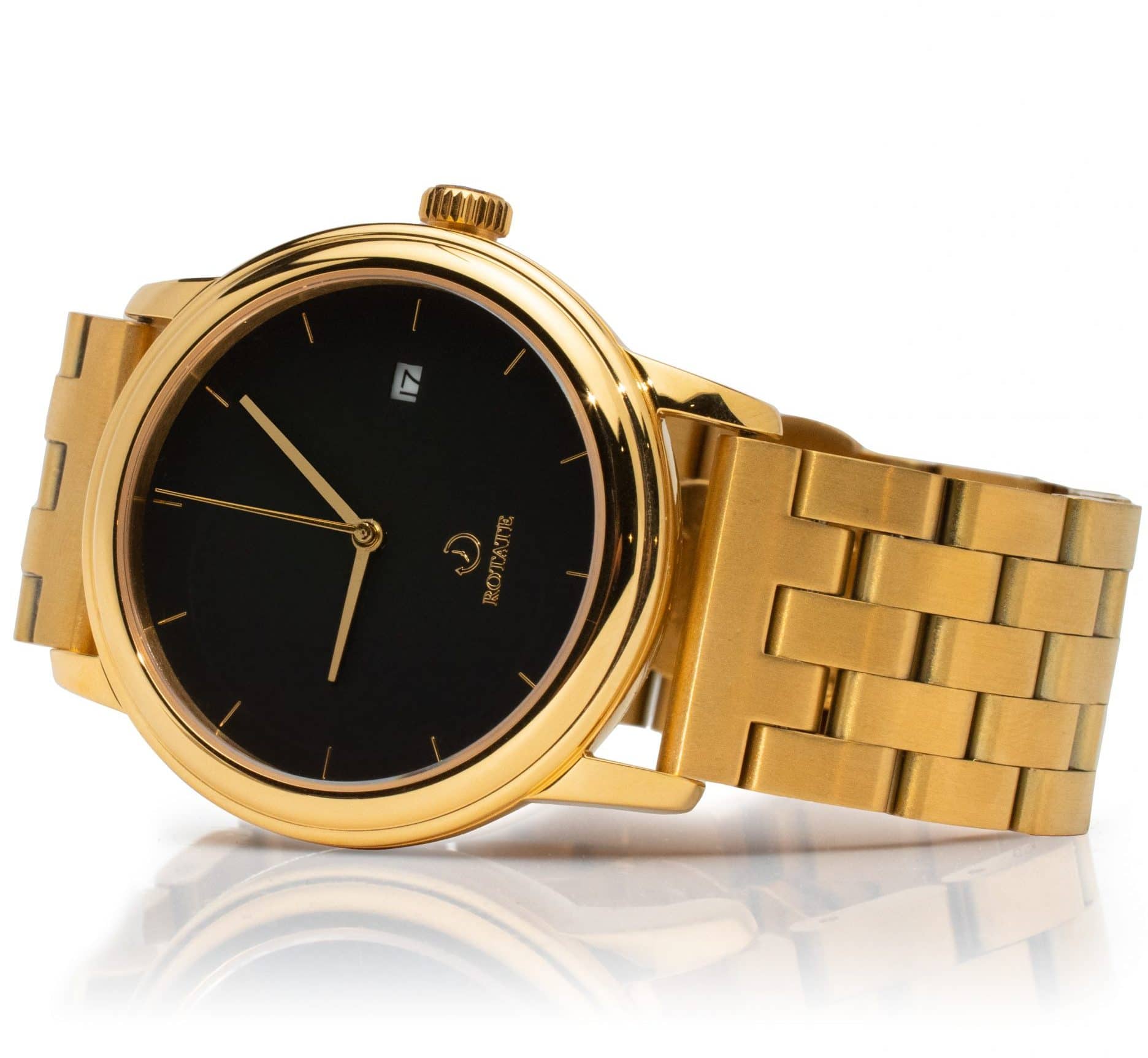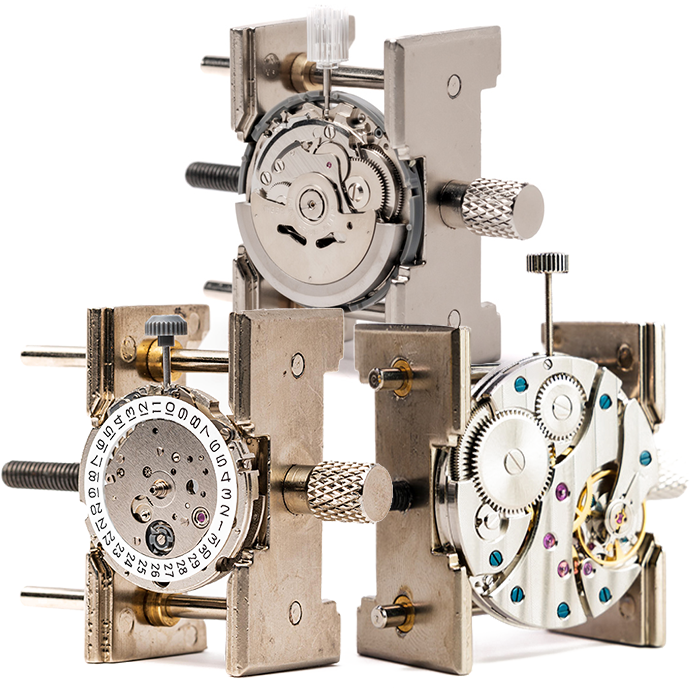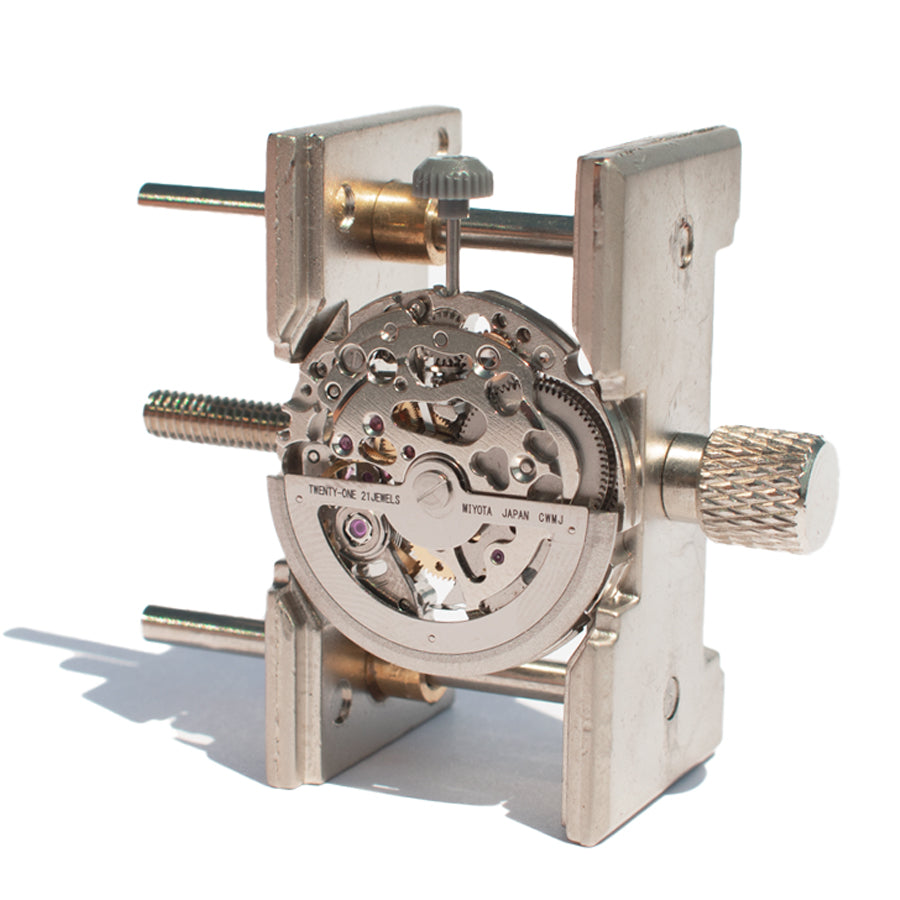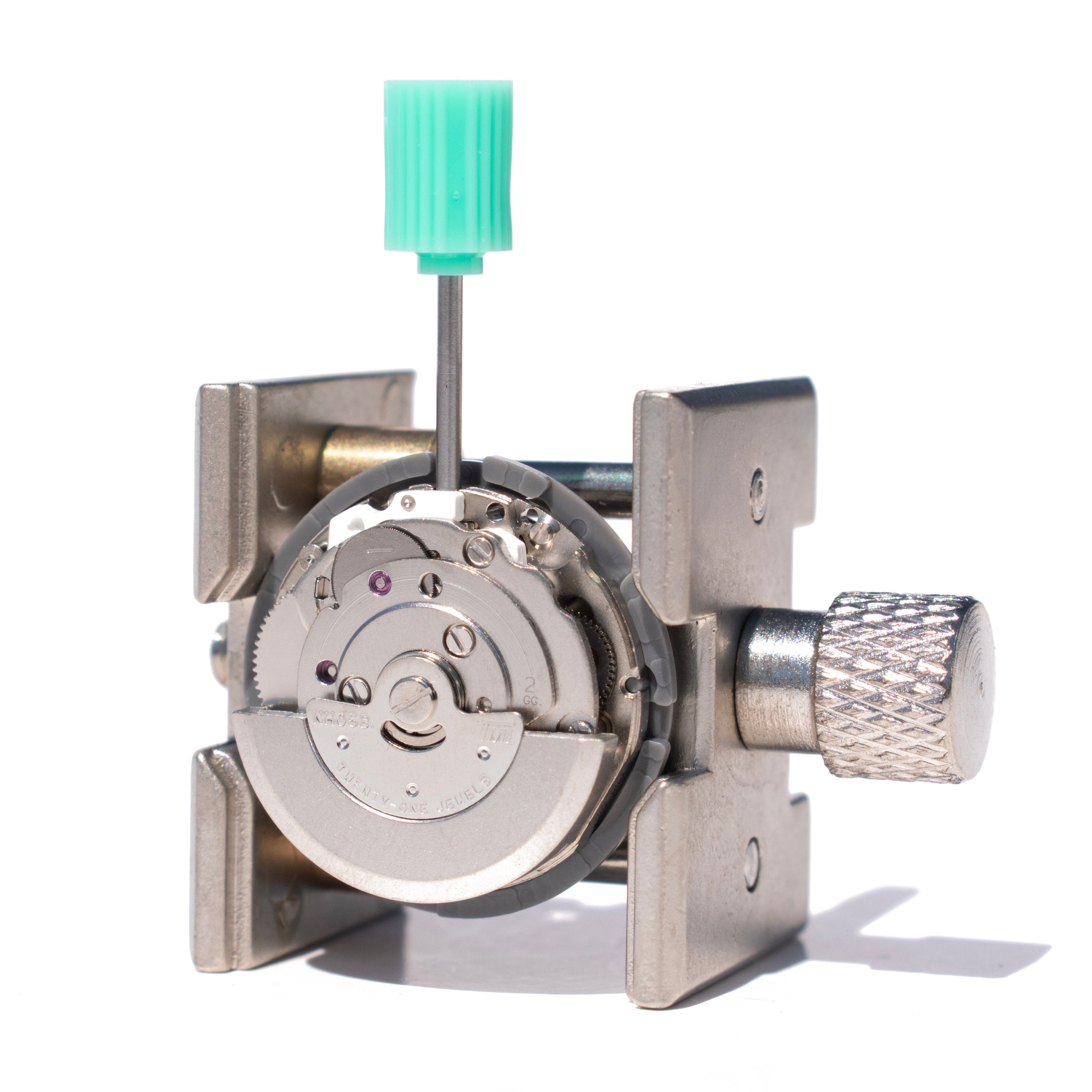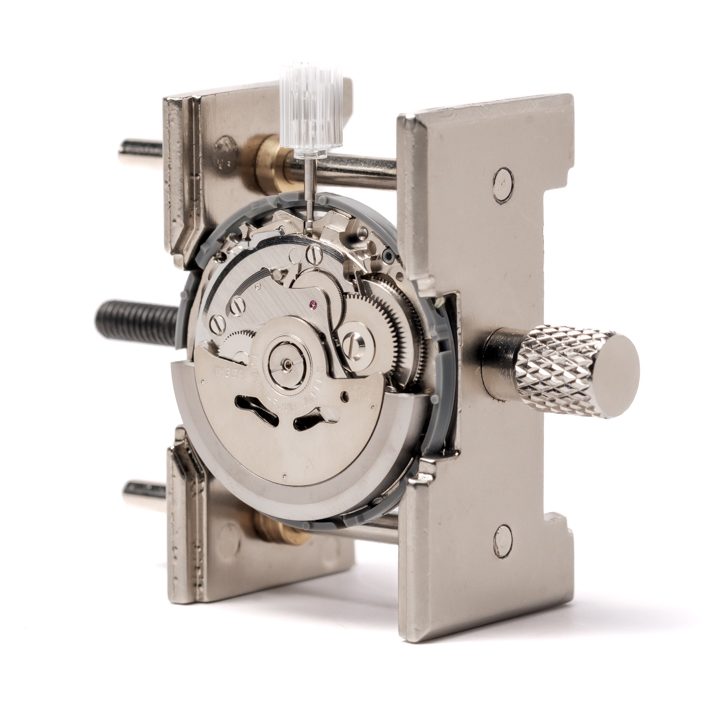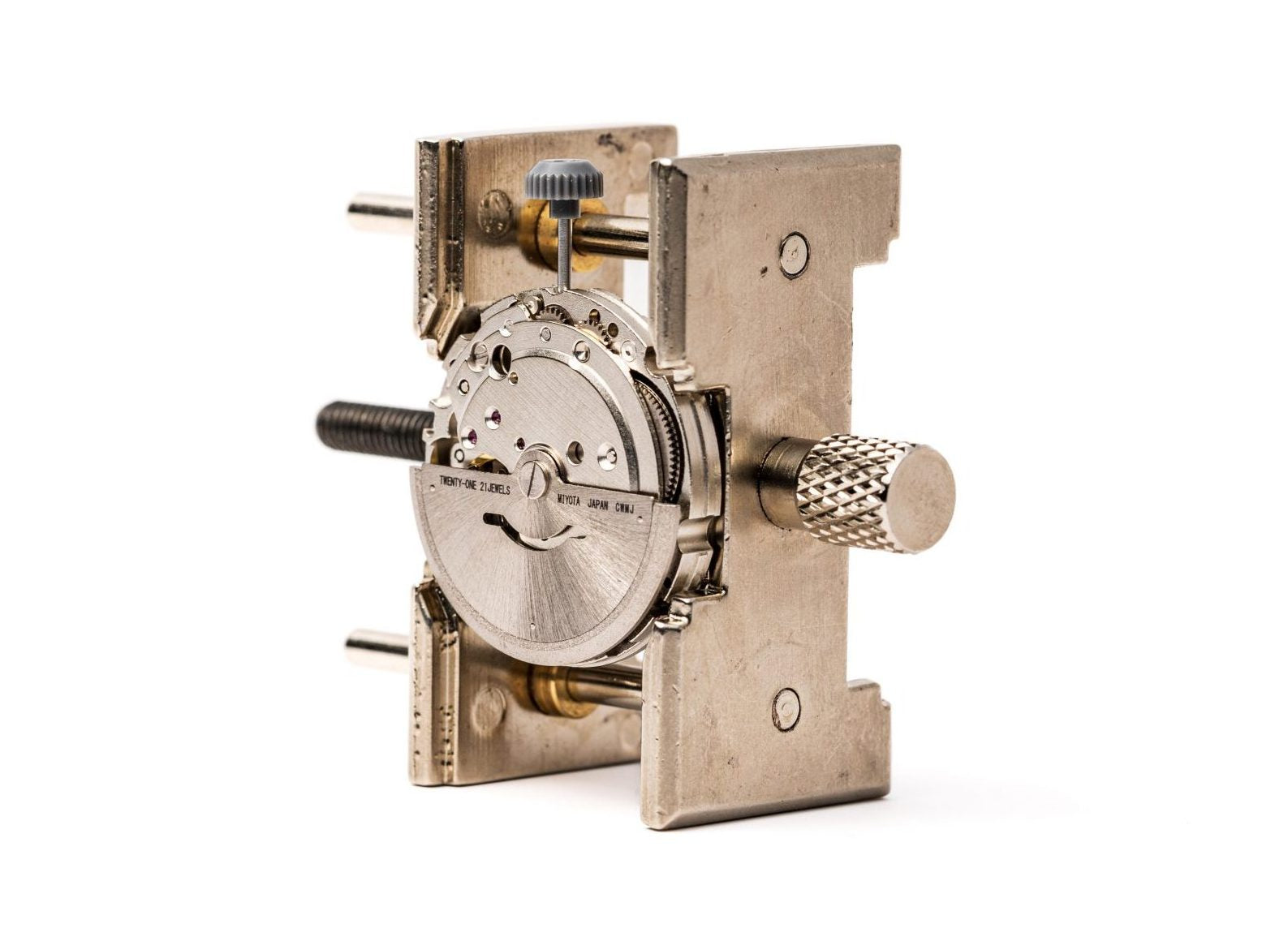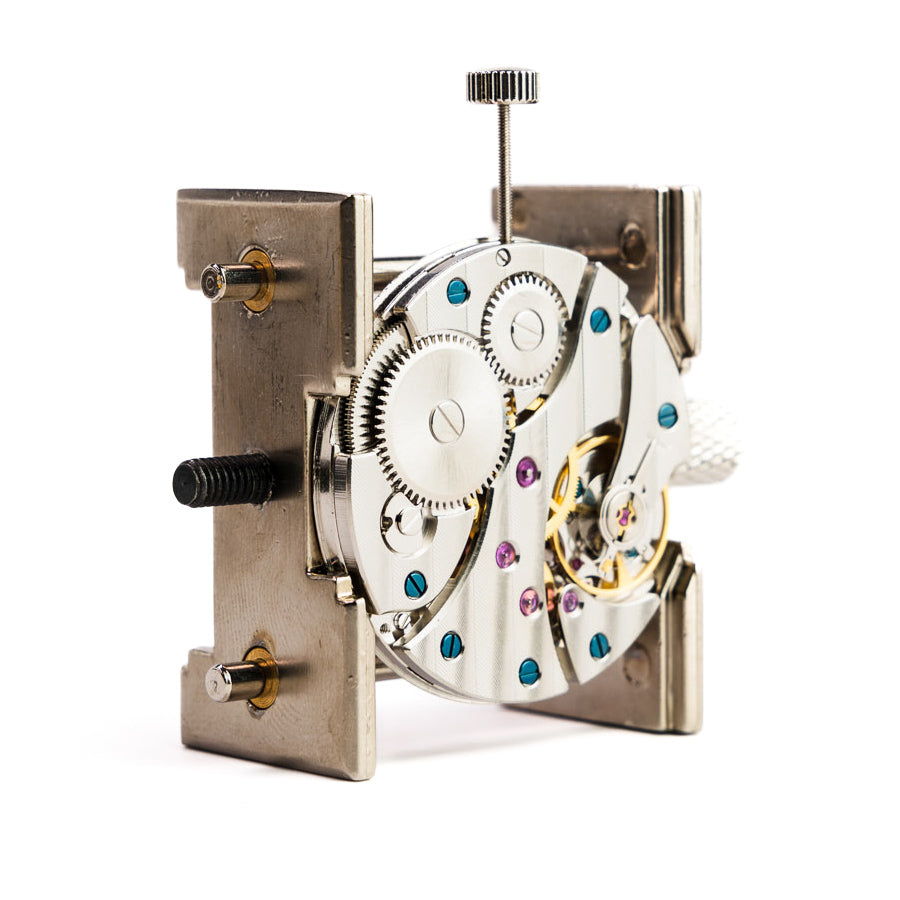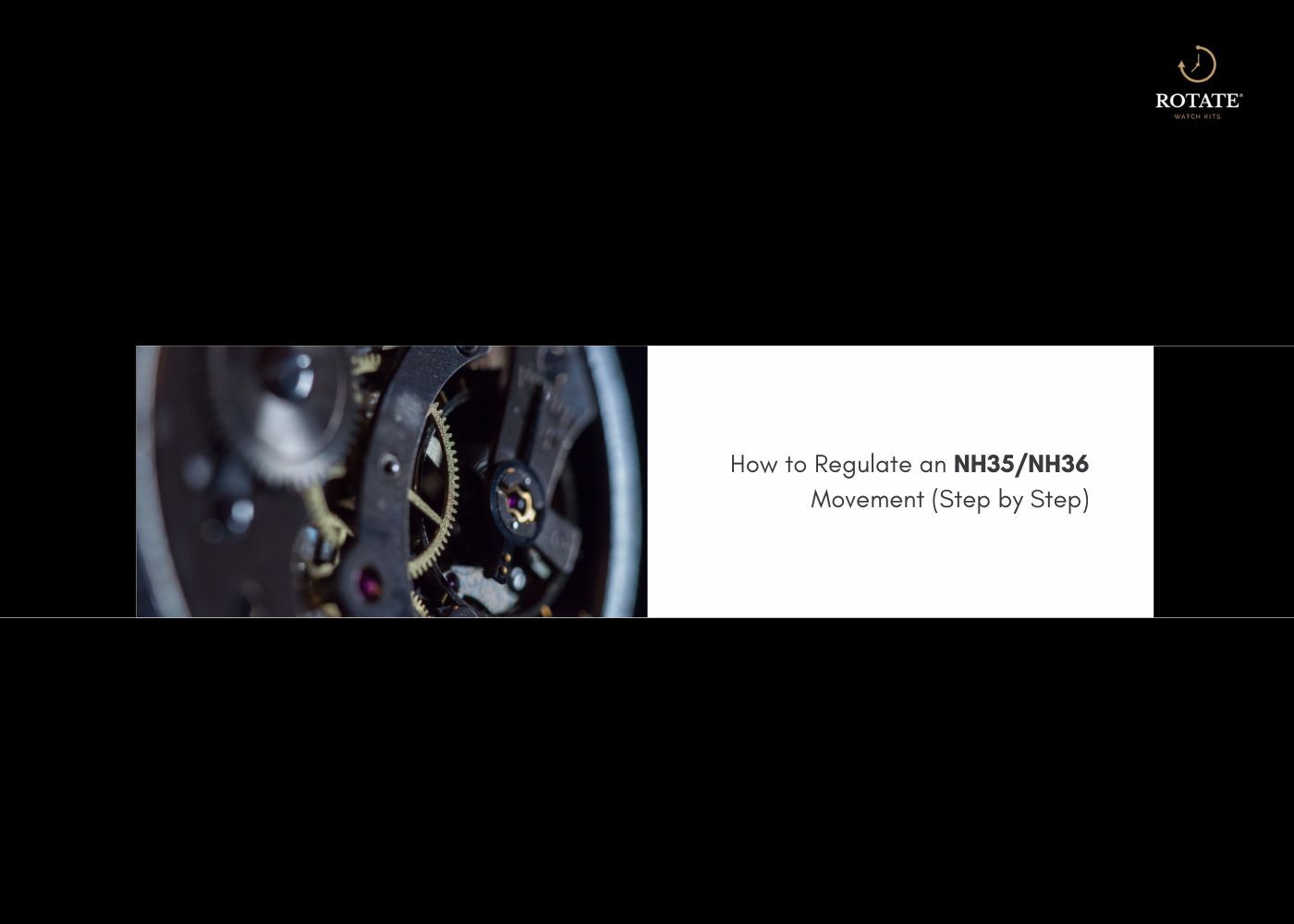
How to Regulate an NH35 or NH36 Movement Step by Step
60-Second Key Takeaways
- How to regulate a watch movement tune rate only, not a full service.
- Target on-wrist average near 0 to +10 seconds per day for NH35 and NH36.
- Regulate an NH35 Movement and Regulate an NH36 Movement with tiny moves toward F for faster and S for slower.
- Measure after each nudge in dial up, crown up, crown down, then bias slightly fast.
- Close cleanly with a greased gasket, wrist test for 24 hours, then refine as needed.
Quick Intro For Enthusiasts
Chasing perfect numbers on a bench often disappoints once a watch hits the wrist. Real wins arrive when rate, positions, and daily wear match. Regulation trims timing so a healthy movement keeps better time without tearing down the caliber. Servicing is different, that covers full disassembly and oils. For a reality check on accuracy expectations, skim the Rotate primer on Seiko movement accuracy and the deeper guide on NH36 accuracy explained.
Aim for practical results you can live with every day.
What Regulation Is Vs Servicing
How to regulate a watch movement adjusts average rate through the regulator arm. Servicing restores performance through cleaning and lubrication. Regulation helps when amplitude looks healthy and beat error stays reasonable. Save teardown work for a separate session if core health looks off.
Ideal Target Accuracy For Nh35 And Nh36
Enthusiast goals land around 0 to +10 seconds per day on the wrist with sensible spread across positions. Slightly fast on average lets everyday wear net out close to zero. Curious about core mechanics before diving in Use the Rotate starter piece on mechanical watch basics.
Tools And Workspace
Precision favors calm, clean space. Keep dust away and parts covered.
Essentials
- Timegrapher or a trustworthy phone timing app plus a reliable reference clock
- Soft work mat and lint-free cloth
- Correct caseback opener for your case
- Fine screwdriver and a pointed piece of pegwood for micro-nudges
- Spring-bar tool for strap removal
- Silicone grease for the caseback gasket
- Nitrile gloves for clean handling
Hands-on practice accelerates confidence. Build skills on a spare caliber with the Seiko NH36 Movement Kit, keep an extra engine ready with the Seiko NH36 Movement, or assemble an NH36 watch end-to-end with the Cabot Watchmaking Kit.
Safety, Warranty, And Water Resistance
Opening a case can void coverage and can reduce water resistance. Work slowly in a clean area. Inspect the caseback gasket, keep it clean, apply a light coat of silicone grease, and avoid over-tightening. Swimming plans call for a proper pressure test after closing.
Know Your Nh35 Or Nh36
After removing the back, the rotor covers most of the view. Near the balance sits the regulator assembly with an index scale marked F or + and S or −. Moving the arm changes the effective hairspring length and shifts the rate. Both NH35 and NH36 hack and hand wind, which simplifies checks. Expect positional variance, so bench numbers guide you, not rule you.
Baseline Checks Before You Regulate An Nh35 Movement Or Regulate An Nh36 Movement
Wind fully. Measure rate, amplitude, and beat error in at least three positions, for example dial up, crown up, crown down. Log starting values. Healthy amplitude and low beat error set the stage for quick success.
Open The Watch Cleanly
Remove the bracelet or strap with a spring-bar tool. Lay the crystal on a soft cloth so the back faces up. Use the correct opener for your case style. Lift the caseback carefully and avoid contacting the rotor. Let the watch run for a minute to settle before measuring again.
Regulate An Nh35 Movement And Regulate An Nh36 Movement With Micro-adjustments
Locate the regulator arm beside the balance. Direction cues are printed on the index. Toward F or + makes the watch run faster. Toward S or − makes the watch run slower. Use a pointed pegwood tip or a very light touch with a fine screwdriver. Move about half to one index tick per attempt. Small moves matter most here.
Measure, Adjust, Re-measure Loop
After each micro-move, recheck the rate. Start dialing up, then crown up, then crown down. Log everything. If the average still misses your target, apply another tiny nudge and test again. Favor a slight daily gain so real-world wear pulls you near zero without constant fiddling.
Fine-tuning For Real-world Wear
Seat the gasket and close the back lightly for a test fit. Wear the watch for a day and compare against your reference. Reopen and refine in tiny steps if drift shows up. Planning a future build or swap between calibers Read the Rotate comparison on NH35 or NH36 choosing your Seiko movement kit.
Close-up And Water Resistance
When the target holds steady, clean the gasket and groove. Spread a thin film of silicone grease. Tighten the caseback to appropriate torque for your case. Swimming requires a proper pressure test at the next opportunity.
Troubleshooting Quick Hits
-
Rate jumps around after a few minutesRestore full wind, let the movement settle for a minute, then recheck.
-
Beat error large or amplitude lowPause regulation and plan a service session for best results.
-
Readings vary widely across retestsClean the workspace, confirm hand clearance, and verify full power before measuring.
Final checklist
- On-wrist goal achieved with a reasonable spread across positions
- Regulator arm secure on the index
- Gasket clean, lightly greased, and properly seated
- Caseback tight, crown action smooth and positive
- Before and after logs saved for future reference
Build skills with Rotate
Sharpen timing skills on safe, repeatable projects. Start with the Seiko NH36 Movement Kit for guided learning, keep a spare heart ready with the Seiko NH36 Movement, or craft a complete watch using the Cabot Watchmaking Kit. When you want more context for movement choices, the Rotate team breaks down families and specs in Seiko movement accuracy, NH36 accuracy explained, and mechanical watch basics.
FAQs
Q1. Do I need a timegrapher to regulate an NH35 or NH36?
Ans. Helpful, yes. A quality phone app plus a reliable reference clock can handle coarse adjustments.
Q2. How much should I move the regulator each step?
Ans. Very small moves, roughly half to one index tick, followed by immediate re-measurement.
Q3. What daily rate should I aim for?
Ans. A practical on-wrist average around 0 to +10 seconds per day with a sensible positional spread.
Q4. Can I fix the beat error at home?
Ans. Risk sits high for early projects. Beat error work involves the hairspring and stud, so leave that for advanced bench practice on spare movements.
Q5. Will regulation affect power reserve or amplitude?
Ans. No, not when the movement is healthy. Low amplitude points to service needs rather than rate adjustment.
Q6. Does opening the case kill water resistance?
Ans. Water resistance can drop after opening. Care for the gasket, apply light grease, close cleanly, and arrange a pressure test for watches used in water.
{ "@context": "https://schema.org", "@type": "FAQPage", "mainEntity": [ { "@type": "Question", "name": "Do I need a timegrapher to regulate an NH35 or NH36?", "acceptedAnswer": { "@type": "Answer", "text": "Helpful, yes. A quality phone app plus a reliable reference clock can handle coarse adjustments." } }, { "@type": "Question", "name": "How much should I move the regulator each step?", "acceptedAnswer": { "@type": "Answer", "text": "Very small moves, roughly half to one index tick, followed by immediate re-measurement." } }, { "@type": "Question", "name": "What daily rate should I aim for?", "acceptedAnswer": { "@type": "Answer", "text": "A practical on-wrist average around 0 to +10 seconds per day with a sensible positional spread." } }, { "@type": "Question", "name": "Can I fix the beat error at home?", "acceptedAnswer": { "@type": "Answer", "text": "Risk sits high for early projects. Beat error work involves the hairspring and stud, so leave that for advanced bench practice on spare movements." } }, { "@type": "Question", "name": "Will regulation affect power reserve or amplitude?", "acceptedAnswer": { "@type": "Answer", "text": "No, not when the movement is healthy. Low amplitude points to service needs rather than rate adjustment." } }, { "@type": "Question", "name": "Does opening the case kill water resistance?", "acceptedAnswer": { "@type": "Answer", "text": "Water resistance can drop after opening. Care for the gasket, apply light grease, close cleanly, and arrange a pressure test for watches used in water." } } ] }


